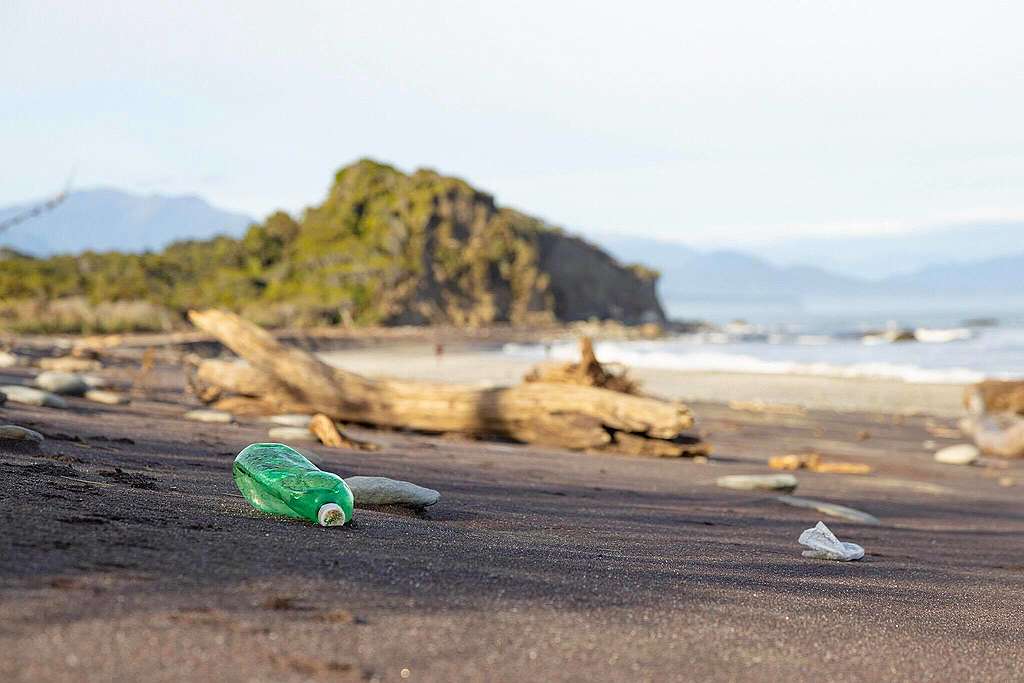Plastic pollution: The crisis choking the oceans and marine life – greenpeace.org

Report on the Global Plastic Pollution Crisis and its Impact on Sustainable Development Goals
Introduction: A Global Challenge to Sustainability
The proliferation of plastic waste represents a monumental global crisis, undermining key objectives outlined in the United Nations’ Sustainable Development Goals (SDGs). Plastic pollutants have permeated every global environment, from remote terrestrial landscapes to marine ecosystems, and have been identified in food and water sources. This widespread contamination poses a significant threat to biodiversity and ecosystem health, directly conflicting with the aims of the 2030 Agenda for Sustainable Development.
Impact Assessment on Marine Ecosystems (SDG 14: Life Below Water)
Scale of Marine Plastic Debris
The integrity of marine environments is severely compromised by the continuous influx of plastic waste. Achieving SDG 14, which aims to conserve and sustainably use the oceans, seas, and marine resources, is directly threatened by this issue.
- An estimated equivalent of one truckload of plastic enters the oceans every minute, amounting to millions of tonnes annually.
- Projections indicate that if current trends persist, the mass of plastic in the oceans could exceed the total mass of fish by 2050.
Consequences for Marine Fauna
The impact on marine life is severe and multifaceted, representing a critical failure to protect marine biodiversity as mandated by SDG 14.
- Physical Harm: Marine species, including whales, sea turtles, dolphins, seals, and seabirds, suffer from fatal entanglement in and choking on plastic debris.
- Ingestion and Starvation: Animals often ingest plastic, which provides a false sense of satiation. This leads to malnutrition and starvation, as evidenced by post-mortem examinations of beached marine mammals.
Root Cause Analysis: Unsustainable Production and Consumption (SDG 12: Responsible Consumption and Production)
Corporate Overproduction of Single-Use Plastics
The primary driver of the plastic crisis is the overproduction of single-use plastics, a direct contradiction to the principles of SDG 12. This goal calls for fundamental changes in the way societies produce and consume goods.
- Major corporations are responsible for producing approximately 300 million tonnes of plastic waste each year.
- In regions like Aotearoa, an estimated one billion single-use plastic bottles are sold annually, highlighting unsustainable consumption patterns.
Critique of Current Waste Management Strategies
Corporate strategies have historically focused on downstream solutions, such as recycling, thereby shifting responsibility to consumers. This approach fails to address the root cause of overproduction and is insufficient for achieving the systemic change required by SDG 12. A transition towards a circular economy and reduction at the source is imperative.
Strategic Interventions and Global Cooperation (SDG 17: Partnerships for the Goals)
The Imperative for a Global Plastics Treaty
Addressing this transboundary issue requires robust international cooperation, as outlined in SDG 17. A legally binding Global Plastics Treaty is essential to establish accountability and mandate a reduction in plastic production. However, progress is hindered by corporate lobbying against such regulatory frameworks.
Role of Civil Society in Driving Systemic Change
Non-governmental organizations and civil society are playing a crucial role in advocating for policy change and corporate accountability. Their strategies include:
- Exposing Polluters: Identifying and publicizing the corporations most responsible for plastic pollution to increase transparency and public pressure.
- Building Global Movements: Mobilizing public support to advocate for international agreements like the Global Plastics Treaty and influence national government positions.
- Direct Action and Advocacy: Engaging in peaceful actions to hold major producers and policymakers accountable at key international forums.
Conclusion: Aligning Actions with the 2030 Agenda
Effectively combating the plastic pollution crisis is fundamental to the achievement of multiple Sustainable Development Goals, most notably SDG 14 (Life Below Water) and SDG 12 (Responsible Consumption and Production). The solution requires a paradigm shift from focusing on consumer-level recycling to enforcing corporate and governmental accountability for reducing plastic production at its source. Establishing a strong Global Plastics Treaty, supported by a united global community, is a critical step toward protecting global ecosystems for future generations.
Analysis of the Article in Relation to Sustainable Development Goals
1. Which SDGs are addressed or connected to the issues highlighted in the article?
-
SDG 14: Life Below Water
- The article’s central theme is the devastating impact of plastic pollution on marine environments. It explicitly states that plastic waste is “threatening ecosystems and devastating marine life,” mentioning how whales, sea turtles, dolphins, and seabirds are choking, getting entangled, and starving due to plastic debris. This directly addresses the goal of conserving and sustainably using the oceans, seas, and marine resources.
-
SDG 12: Responsible Consumption and Production
- The article identifies the “overproduction of single-use plastic by major corporate polluters” as the root cause of the crisis. It calls for a “massive reduction in plastic production” and criticizes the focus on consumer recycling as a “false solution,” thereby highlighting the need for systemic changes in production patterns and corporate accountability.
-
SDG 6: Clean Water and Sanitation
- The article mentions that plastic waste has invaded “our food and even in our drinking water.” This connects the issue of plastic pollution directly to the quality of water resources, which is a key component of SDG 6.
-
SDG 17: Partnerships for the Goals
- The article advocates for a “Global Plastics Treaty” and calls for “systemic change on a global level.” This emphasizes the need for international cooperation and multi-stakeholder partnerships between governments, corporations, and civil society (like Greenpeace) to tackle a transboundary problem like plastic pollution.
2. What specific targets under those SDGs can be identified based on the article’s content?
-
Under SDG 14 (Life Below Water):
- Target 14.1: “By 2025, prevent and significantly reduce marine pollution of all kinds, in particular from land-based activities, including marine debris and nutrient pollution.” The article is entirely focused on marine debris, specifically plastic waste originating from corporate production, which is a land-based activity. It describes how “Millions of tonnes of plastic waste flood the oceans annually.”
- Target 14.2: “By 2020, sustainably manage and protect marine and coastal ecosystems to avoid significant adverse impacts…” The article details the adverse impacts on marine ecosystems, noting that plastic pollution is “devastating marine life” through choking, entanglement, and starvation.
-
Under SDG 12 (Responsible Consumption and Production):
- Target 12.4: “By 2020, achieve the environmentally sound management of chemicals and all wastes throughout their life cycle… and significantly reduce their release to air, water and soil…” The article’s discussion of plastic waste flooding oceans and the need to hold corporations accountable for the entire lifecycle of their products aligns with this target.
- Target 12.5: “By 2030, substantially reduce waste generation through prevention, reduction, recycling and reuse.” The article strongly advocates for prevention and reduction at the source, stating that the solution is a “massive reduction in plastic production,” rather than relying on recycling.
-
Under SDG 6 (Clean Water and Sanitation):
- Target 6.3: “By 2030, improve water quality by reducing pollution, eliminating dumping and minimizing release of hazardous chemicals and materials…” The statement that plastic is found “in our drinking water” directly relates to this target of reducing water pollution.
-
Under SDG 17 (Partnerships for the Goals):
- Target 17.14: “Enhance policy coherence for sustainable development.” The call for a “Global Plastics Treaty” is a direct effort to create coherent global policy to address the plastic crisis, which the article notes is a “massive global crisis” requiring action beyond individual countries.
3. Are there any indicators mentioned or implied in the article that can be used to measure progress towards the identified targets?
-
Indicators for Marine Debris (Target 14.1):
- Volume of plastic waste entering oceans: The article quantifies this by stating, “Millions of tonnes of plastic waste flood the oceans annually,” and uses the analogy of “a rubbish truck dumping its contents into the sea every single minute.”
- Density of plastic in oceans: The article implies this indicator with the projection that “by 2050, there could be more plastic in the seas, by weight, than fish.”
- Presence of plastic on coastlines: The article mentions the “common sight – a piece of plastic waste, washed up on one of the beautiful beaches,” which serves as a qualitative indicator of coastal pollution.
-
Indicators for Waste Generation (Target 12.5):
- Annual plastic waste production: The article provides a figure: “major corporate polluters like Coca-Cola produce 300 million tonnes of plastic waste” annually.
- Consumption of single-use plastics: A specific, localized indicator is given: “an estimated one billion plastic bottles are sold annually” in Aotearoa (New Zealand).
-
Indicators for Water Quality (Target 6.3):
- Presence of contaminants in drinking water: The article implies this indicator by stating plastic is found “in our drinking water.” A formal indicator would be the measured concentration of microplastics in water sources.
-
Indicators for Impact on Marine Life (Target 14.2):
- Harm to marine species: The article describes the impact on wildlife, such as “whales, sea turtles, dolphins, seals, and seabirds are choking on plastic debris or becoming hopelessly tangled in it,” and whales found with “stomachs full of indigestible plastics.” These observations can be used as qualitative indicators of ecosystem health.
4. Summary Table of SDGs, Targets, and Indicators
| SDGs | Targets | Indicators Identified in the Article |
|---|---|---|
| SDG 14: Life Below Water |
14.1: Reduce marine pollution, including marine debris.
14.2: Protect marine and coastal ecosystems. |
|
| SDG 12: Responsible Consumption and Production |
12.4: Environmentally sound management of wastes.
12.5: Substantially reduce waste generation through prevention and reduction. |
|
| SDG 6: Clean Water and Sanitation | 6.3: Improve water quality by reducing pollution. |
|
| SDG 17: Partnerships for the Goals | 17.14: Enhance policy coherence for sustainable development. |
|
Source: greenpeace.org
What is Your Reaction?
 Like
0
Like
0
 Dislike
0
Dislike
0
 Love
0
Love
0
 Funny
0
Funny
0
 Angry
0
Angry
0
 Sad
0
Sad
0
 Wow
0
Wow
0




















































.jpg.webp?itok=0ZsAnae9#)


























